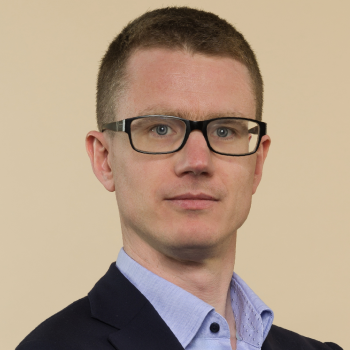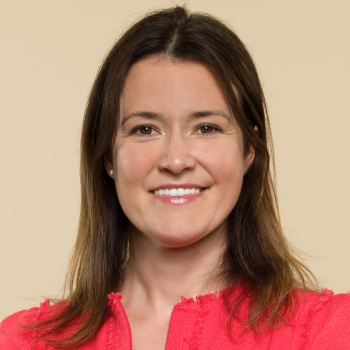
Investing in oncology: forewarned is forearmed


Can you give a brief overview of the oncology sector?
Our investment universe covers all companies involved in the fight against cancer. This means that we are not targeting any particular sector, but all industries potentially active in this feld. There are currently enormous needs in this domain, including diagnosis through mass screening, which must be made easier and more acceptable, and through tumour profling, which provides a deeper understanding of each patient’s cancer, and also through technological progress using precision systems, to enhance radiation treatment, and of course through the range
of available drugs.
We cover all regions and we can invest in the different stages
of solutions development across all domains.
Why choose a strategy invested in the oncology sector?
Cancer, in its multiple forms, is the second-leading cause of global mortality. Demand is therefore very strong.
Furthermore, the range of players involved has broadened suffciently to provide quite a large investment universe. This enables us to construct a highly diversifed portfolio by selecting equities which may potentially increase in value as companies grow.
Moreover, as a responsible investor, Candriam associates its investments with meeting the United Nations sustainable development goals (SDGs).
The 3rd UN sustainable development goal aims at ensuring healthy lives and promoting the well-being of all at all ages. Our strategy espouses these objectives and aims to support companies seeking solutions against cancer
What are the key performance factors for the companies you select?
Under our analysis, we adopt a fully product-based approach. Companies must develop and/or market products which clearly enhance results for patients. We carry out in-depth analysis of clinical & medical data, comparing them to existing treatments and therapies to assess whether they enable improvements. In order to do so, we have built up a team composed of scientists, chiefly biotech PhDs, who assess the clinical quality of future therapeutic solutions and therefore detect tomorrow’s winners before their success is priced into their share price.
We also cross-reference our fundamental analysis with a tried & tested valuation, as we wish to avoid investing in overpriced stocks which will have only limited upside potential. Stock picking is also based on a non-financial analysis aimed at gaining a better understanding of the risks and opportunities associated with ESG (Environmental, Social & Governance) criteria[1].
We also assess the extent to which a company’s activities are exposed to major sustainability issues, and how it manages its relations with stakeholders. We exclude companies that fail to meet the 10 Principles laid out in the United Nations’ Global Compact, as well as controversial activities such as arms, tobacco, thermal coal and other businesses we consider unsustainable.
Lastly, our selection process is based on core convictions. We draw on our in-house resources to undertake proprietary clinical and financial analysis. This process ultimately enables us to reduce the investment universe[2] by 20% or more.
This stringent process has already proved its efficiency through successful stock picking in the pharmaceutical & medical sectors for over 20 years and our know-how is recognised throughout the market.
What are the prospects for the healthcare sector, particularly in oncology?
Our research shows the outlook is very promising. The healthcare sector, and specifically oncology, offers promising prospects. Against a backdrop of moderate economic growth and falling interest rates, this sector is proving to be less vulnerable to economic fluctuations, with demand for care remaining stable regardless of economic conditions.
In addition, lower interest rates should boost investor interest in those parts of biotech which are innovative, but not yet profitable.
Although 2023 was marked by share price disappointments in the healthcare sector, as investors turned instead to artificial intelligence and technology, innovation in this field remains robust. In the U.S. alone, more than 66 new drugs have been approved by the FDA (Food and Drug Administration), during nearly a third of these were in oncology, a sector that should continue to attract attention, offering double-digit growth potential through 2028[3]. According to IQVIA, around 100 new cancer drugs could reach the market during this period, with an increasing focus on personalized therapies.
Against this backdrop, the oncology therapeutic market is expected to grow by around 15% a year over the next five years.
Finally, the diagnostics and profiling market is also set to enjoy robust double-digit growth[4] in the near future.
How does Candriam’s approach stand out?
Besides the fact that this strategy is almost unique in the market, Candriam can also boast 20 years’ expertise in this particular feld, through its hallmark
biotech equity investments. We also owe our success to the people involved. During the stockpicking process, we draw on both fundamental analysis, provided by our 4 biotech experts, and also on input from our emerging equity markets team, along with the tech stocks team and the thematic equity team.
Lastly, don’t forget, either, that our strategy is also backed by input from an independent scientific review committee. The committee plays a number of roles including providing investment ideas and also clarifying new technologies or medical
protocols currently under development.
Ultimately, the committee provides us with other expert opinions and therefore challenges our views.
Why do you believe it is time to invest in this strategy?
We believe that there are 2 key reasons for investing in this fund. Firstly, the fght against cancer has become an issue for broader society and is affecting many global sectors. Access to healthcare is progressing constantly and is therefore becoming a worldwide megatrend. By investing in this fund, you are supporting a broad range of innovative companies which may prove to be game-changers in cancer research.
Secondly, because health is an issue that concerns us all, each year Candriam dedicates a portion of the net management fees of our responsible range and thematic funds to the fnancing of social impact initiatives, coordinated through the
Candriam Institute for Sustainable Development.
Finally, for patients: to ensure that this disease becomes a “chronic” disease, which patients can live with on a daily basis.
Investing in oncology: forewarned is forearmed
Discover our Q&A

Servaas Michielssens and Linden Thomson explain to investors the approach they used to create and develop an investment strategy in the oncology sector.
Fight against cancer
[1] The ESG analysis described above is applied to 90% min. of the investments within the strategy, apart from cash deposits, liquidities and index derivatives.
[2] We only take into account sectors that are not excluded by the “Candriam Exclusion Policy”. This document can be downloaded here: https://www.candriam.fr/fr/professional/market-insights/sri-publications/
[3] Source: IQVIA Forecast Link, IQVIA Institute, December 2023
[4] Source: 1 Markets and Markets | ² The Business Research Company - Market Forecast included sales of oncology devices and related services used for diagnoses, management and treatment of cancer (i.e. radiation)
